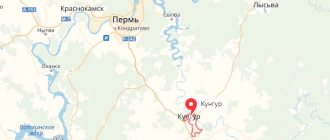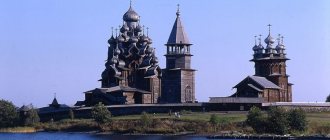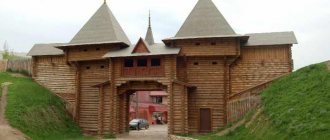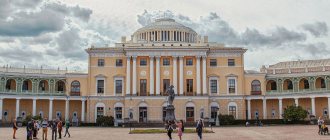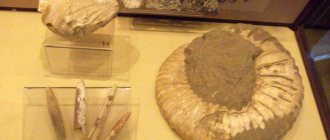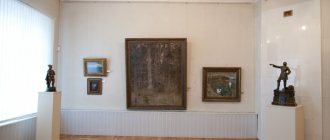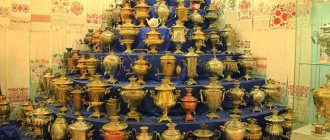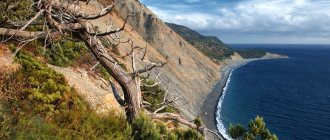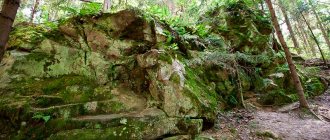The historical and archaeological complex of Bulgar, listed as a UNESCO World Heritage Site, is located in Tatarstan, 200 km south of Kazan and 120 km north of Ulyanovsk.
The Bulgarian Museum-Reserve is located on the site where settlements of the Neolithic, Bronze and Early Iron Ages were located, and later the main city of the powerful Volga Bulgaria arose. Aga-Bazar in the pre-Mongol period served as a trading platform from the end of the 8th century, connecting Ancient Rus' with the East, and then turned into the capital of the Northern Ulus of the Golden Horde.
3D virtual tours of Bulgar on the official website of the museum-reserve
History of creation
Photo from the site - turbina.ru
During the Soviet period, not far from present-day Bolgar, an ancient settlement was discovered, founded by Turkic-speaking tribes during the formation of Volga Bulgaria. The ancient settlement became the basis for the creation of a museum-reserve back in 1969.
In the 21st century, a comprehensive reconstruction of the historical and architectural complex began, which was completed in 2016. Now the museum-reserve appears to visitors in an updated, rather attractive appearance.
Tickets and opening hours
A single entrance ticket for an adult visitor will cost 600 rubles; there are discounts for students, pensioners and schoolchildren. A trip to the museum will cost them half as much - 300 rubles.
The museum is open daily from 8:00 to 18:00, without lunch and weekends. Museum Street is open from 9:00 to 18:00, closed on Mondays.
Sights of Bulgar
Photo from the website - foto-planeta.com
On the territory of the museum-reserve there are unique attractions that reveal the cultural characteristics of Tatarstan. The thousand-year-old cultural landscape of the settlement has been preserved unchanged. Since the pre-Mongol period, the Jerusalem ravine has remained untouched. Built in the 18th century. a small village on the site of the ancient settlement has preserved recognizable cordons to this day.
Here are some of the amazing architectural objects of the Bulgarian Museum.
Cathedral Mosque
Cathedral Mosque.
photo from the site - old.rinay.ru To demonstrate the power of the Mongolian state and the greatness of religion in the 13th century. The Cathedral Mosque was built. The beauty and size of the Muslim complex amazed foreigners sailing along the Volga. From the high towers the coastline could be seen for tens of kilometers, offering a magnificent view. Now the territory of the Cathedral Mosque has been partially restored. On religious holidays, cultural events are held here.
Great minaret
Big minaret.
Photo from the website - www.bolgar.info The entrance to the Cathedral Mosque is the Great Minaret, completely reconstructed in the last century. The tall 32-meter building consists of two tiers, with a spiral staircase rising inside. In the upper part there are tinted viewing glasses. The old minaret was destroyed by the insatiability of treasure hunters who dug under the base of the structure.
Museum of Bulgarian Civilization
Museum of Bulgarian Civilization.
Photo from the website - tonkosti.ru The museum building is organically integrated into the Volga coastline and additionally serves as a river station. The six-story complex is equipped with escalators and elevators. The galleries contain more than 1,600 items telling about the history of the state of the ancient Bulgars and the city.
Museum of Bulgarian Civilization. Photo from the site - tonkosti.ru
Archaeological finds, ancient maps, decorative panels and models show the significance of the great civilization.
Khan's tomb
Khan's tomb.
Photo from the site - lookmytrips.com The Khan's tomb is made in a classic cubic form, characteristic of Muslim architecture. The top of the medieval mausoleum is decorated with a spherical dome. The tomb housed eight ancient burials of the khan’s family. To this day, only one of the four mausoleums has survived.
Museum and exhibition complex “Adoption of Islam”
Koran Museum.
Photo from the site - hu.pinterest.com This monumental building was erected in honor of the conversion of local Bulgars to Islam. The main exhibition in the central hall is the largest printed Koran in the world. Its weight is 500 kg, and the malachite fabric of the cover is covered with a silver pattern. It is complemented by semi-precious stones, gilding and durable leather binding.
On the ground level there is a museum hall of the Koran. Many of its exhibits tell about the development of religion in the region.
Khan's Palace
Khan's Palace.
Photo from the site - irecommend.ru On the upper plateau of the ancient settlement there are the remains of a monumental rectangular structure made of stone and brick - the Khan's Palace. It was built in the 13th century and dates back to the Golden Horde period. Four pylon towers are installed at the corners of the complex, measuring 29x24 m. The entire area of the archaeological excavations is well decorated and protected from above by a special roof.
Black Chamber
Black Chamber.
Photo from the site - old.rinay.ru One of the ancient surviving buildings on the territory of the settlement is the Black Chamber. The building was erected in the 14th century. and served at different periods as a place of study, a khan's court and a monastery. The building has preserved original architectural decorative elements from the period of its construction. The chamber owes its name to a fire that caused the walls to turn black.
Monument to the Sahibs
Monument to the Sahibs.
Photo from the site - gavtravel.ru Not far from the Small Minaret, a memorial dedicated to the followers of the Muslim prophet Muhammad was recently built. A monument to the sahibs was erected at the supposed burial site of one of them. These missionaries came to still pagan Bulgaria and were engaged in preaching Islam, as well as treating local residents. The only items that the sahibs had are immortalized on the monument - a turban, a simple staff and an inkwell.
Museum "Bulgarian Tea Party"
Museum "Bulgarian Tea Party".
Photo from the website - vbolgar.ru In the “Bulgarian Tea Party” museum, the main exhibits are all kinds of samovars from different eras. There are about 50 of them here. The smallest one fits in the palm of your hand and is called “Egoist”. The exhibition shows the sequence of origin and development of the region's tea culture. Here you can learn about herbal infusions (an old Russian analogue of tea) and try balmai (a dessert made from butter and honey).
Well of Gabrahman
Well of Gabrahman.
Photo from the site - wikimapia.org A little further from the main historical buildings there is an ancient well. It is impossible to accurately determine the time of its appearance. According to some legends, it was built in the 7th century, according to other legends - in the 10th century. Water from the source is considered healing, you can take it with you. There are observation platforms, rest areas and walking paths around the well.
Abdullah Alisha Museum
Abdullah Alisha Museum.
Photo from the website - vbolgar.ru An exhibition has been created in this house telling about the Tatar children's writer. Special interactive classes dedicated to Alisha’s fairy tales are organized for schoolchildren. The military journey of the famous writer is separately described.
Assumption Church
Assumption Church.
Photo from the site - kazan-holiday.ru In the 18th century. Thanks to active Russification, an Orthodox church was built on Muslim soil. The Kazan merchant Mikhlyaev allocated money for the construction. Material from ancient tombs and monuments was used during construction. Inside the church there are interesting historical exhibits.
Museum of the Nobility of Spassky District
Museum of the nobility of Spassky district.
Photo from the website - vbolgar.ru In a 19th century stone and brick estate. They set up an exhibition dedicated to the nobility. It presents original objects, household items and exhibits dating back to the times of famous families in the region:
- Musin-Pushkin;
- Molostovovs;
- Likhachev.
The house, in the old fashioned way, is divided into two parts - women's and men's. At the entrance there is a photograph of the former owners of the estate.
Museum "City on the River"
Museum "City on the River".
Photo from the website - vbolgar.ru The exhibits of the “City on the River” museum will tell about the difficult and dramatic life of the Volga Bulgars on the river banks. The history of land development on the floodplain of the left bank of the Volga at the confluence with the Kama is shown. On the old steamship, turned into a museum exhibit, dozens of fishing devices, exhibits and hooks are on display.
Natural attractions of the city and surrounding area
Reserves, zoos, lakes and parks – these are the beauties of nature that Bolgar and its surroundings are famous for.
Camel farm "Laidoya"
- Address: st. Kul Gali, 9.
For most Russians, a camel is an exotic animal, so visiting the Laidoya farm, where camels are kept, is interesting for both adults and children. The farm appeared in Veliky Bolgar in 2013. Camels of the Bactrian genus are kept here.
Visitors to the farm can not only enjoy the contemplation of these amazing animals, but also feed or groom the camels, ride them, take pictures with the animals, and, moreover, in a costume from the era of the Ancient Bulgars.
On the farm territory there is a souvenir shop that offers products made from camel hair. At the farm you can taste what camel milk tastes like.
Captain's Well, or Gabdrakhman's Well
- Coordinates: 54.988445, 49.070347.
On the territory of the Bulgarian Museum-Reserve there is a holy spring, which has two names - the well of Gabdrakhman or the Captain's well. This is one of the most important Muslim shrines in the city.
According to legend, it is located in the place where one of the messengers of the Prophet Muhammad, Gabdrakhman, stuck his staff. This is the story of the first title. Another name refers us to the pages of study and description of the source, which were carried out in the 18th century by the geographer scientist, captain Nikolai Petrovich Rychkov.
There is a rotunda above the source, and around it there is a natural park - an excellent place for walks and relaxation. Therefore, the holy spring is not only a cult, but also a natural attraction.
Lake Rabiga-Kul (Mochilishch)
- Coordinates: 54.978470, 49.013399.
One of the most picturesque places is located on the outskirts of the city. This is Lake Rabiga-Kul, or Rabigi (Tatar name), or Mochilishche (Russian name). The lake has sacred significance and is a place of pilgrimage for Muslims. The waters there are considered sacred.
According to legend, the lake appeared after the Bulgarian khan mourned his daughter, who was accidentally killed by him. Where his tears flowed, a lake appeared. Its waters are considered the cleanest. According to scientific theory, the lake arose as a result of a meteorite falling into the resulting crater, which is confirmed by its round shape.
Park "Dolgaya Polyana"
- Coordinates: 55.049246, 48.941019.
In 2000, the historical and architectural natural park “Dolgaya Polyana” was created in the Republic of Tatarstan. This is a protected area on the banks of the Volga River, combining the Molostvov estate, a village and a natural park with a large number of plants listed in the Red Book. In the park, visitors are attracted by an anomalous zone where the operation of clocks and cameras is disrupted. It is located in two large clearings on the descent to the Volga, where a person feels good and calm.
Spassky Nature Reserve
- GPS coordinates: 54.948952, 48.981851.
The complex nature reserve “Spassky” is located on 60 islands of the Kuibyshev Reservoir. It is the largest of 11 reserves and protected areas in Tatarstan. It was named in honor of the once-existing district town of Spassk. In the island system of the reserve, the forest animals, birds, fish and reptiles inhabiting it are protected and studied.
Archaeological and historical sites have been preserved on the territory of this natural attraction. For example, on the island of Old Town there are the remains of the Spasskaya prison. The reserve is actively working with schoolchildren, and excursions are held for tourists.
Don't miss the sights of other cities of the Republic of Tatarstan - Kazan, Bugulma, Yelabuga, Sviyazhsk, Zelenodolsk, Almetyevsk, Chistopol, Naberezhnye Chelny
In the city of Bolgar, or Bulgar, an amazing historical journey awaits every tourist. What is listed in this article is by no means an exhaustive list of attractions that can be found in the settlement. Different eras, different cultures and the indescribable flavor of Tatarstan are intertwined in the monuments and museums of this amazing Russian city.
Excursions to Bulgar
Photo from the website - travel-russia.livejournal.com
A trip to the Bulgarian Museum-Reserve is one of the popular outing tours from Kazan. Tourists go on a tour by bus in comfortable conditions, accompanied by a virtuoso guide. During the trip, everyone will learn a lot of interesting things about the origin of Volga Bulgaria and the history of this region.
For those who do not want to book an excursion, you can go on a trip on your own:
- by car;
- by regular bus from Kazan;
- by water on the motor ship "Meteor".
Photo from the website - personalguide.ru
It is important to know that an additional fee is charged for visiting some objects on the territory of Bulgar. You will also have to pay extra for photo and video shooting in the museum halls. There are also paid services such as:
- camping;
- golf car rental;
- bicycles for rent;
- luggage storage.
More detailed information can be found on the official website of the Bulgarian Museum-Reserve - vbolgar.ru.
Bread Museum
One of the first objects of the Bolgar revival project was the unique bread museum. Its visitors will have the opportunity to participate in the entire technological chain of growing and processing grains. This means that you will have to collect the ears of corn with your own hands, thresh them, grind flour from them, and only then start baking bread. On the territory of the museum, the life of the ancient Bulgars was recreated, a miller's house, a barn, a threshing floor, a barn, a bakery, a forge, buildings for keeping domestic animals, a well with a crane were built and, most importantly, a real wooden mill was erected, the wingspan of which is 15 m.
How to get there?
Photo from the site - pilothub.ru
Bulgar is located in the Spassky district, at a distance of less than 200 km from the capital of Tatarstan. The city stands on the very bank of the deep Volga. The easiest way to get there is by flying or arriving in Kazan. There are daily bus services from the capital's southern bus station. In summer, tourist ships and high-speed “Meteora” moor at the Bulgar river station.
Where to stay?
Hotel Regina, Bolgar
The small town does not have five-star apartments, but this is not required. The Regina Hotel is considered the most comfortable, with rooms of three classes and a stylish interior. Visitors are well received at the suburban hotel "Medvedeff", guest houses "Chingis Khan" and "Lesnaya Byl". Guests are always welcome at the Lilies of the Valley Hotel and the Rezalit Hotel. Tourists can also contact local real estate agencies to select private daily housing.
Photo from the site - tripguide.ru
The museum-reserve will help you study the cultural characteristics of ancient Bulgaria and immerse yourself in its history. It is better to set aside a few days to get acquainted with all the sights. Visitors will long remember the amazing aura of ancient buildings and the friendliness of the local residents.
